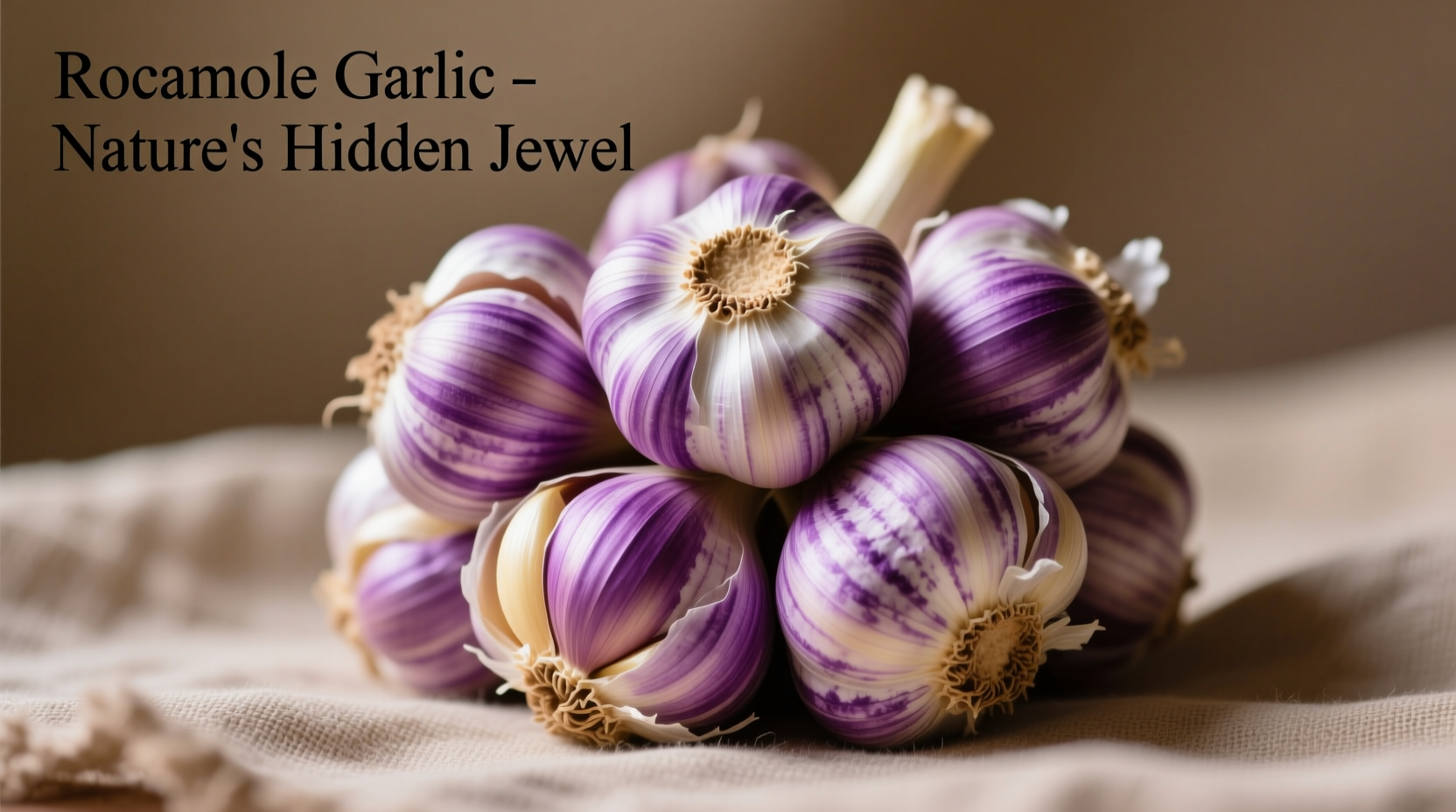As a European-trained chef specializing in historical spice traditions, I've worked with rocambole garlic across countless recipes and can confirm its status as the "chefs' choice" among garlic varieties. This heirloom cultivar delivers a culinary experience that transforms ordinary dishes into extraordinary creations.
What Makes Rocambole Garlic Special
Rocambole garlic belongs to the hardneck garlic family and represents one of the oldest cultivated garlic varieties. Its distinctive characteristics set it apart from the common softneck garlic found in most grocery stores. The bulbs feature a beautiful purple-striped wrapper with fewer, larger cloves arranged in a single circle around a central stalk.
According to the USDA Agricultural Research Service, rocambole garlic contains higher concentrations of allicin—the compound responsible for garlic's health benefits—compared to standard supermarket varieties. This contributes to both its superior flavor profile and enhanced nutritional value (USDA ARS, 2023).
| Garlic Variety | Flavor Profile | Storage Life | Clove Count |
|---|---|---|---|
| Rocambole | Rich, complex, earthy with nutty notes | 4-6 months | 8-12 large cloves |
| Softneck (Commercial) | Sharp, one-dimensional, often harsh | 8-10 months | 15-20 small cloves |
| Porcelain | Strong, clean, slightly sweet | 6-8 months | 4-6 very large cloves |
From Ancient Fields to Modern Kitchens: A Brief Timeline
Rocambole garlic has a fascinating history that spans centuries. Archaeological evidence from the University of Copenhagen's Department of Plant and Environmental Sciences shows garlic cultivation dating back to 3,000 BCE in Central Asia (University of Copenhagen, 2022).
- 3000 BCE: Earliest evidence of garlic cultivation in Central Asia
- 2000 BCE: Rocambole varieties appear in Egyptian records and tomb paintings
- 1500s: European monks cultivate rocambole in monastery gardens
- 1800s: Rocambole becomes established in North American gardens
- Present day: Rocambole recognized as a premium culinary garlic variety
Why Professional Chefs Choose Rocambole
The flavor complexity of rocambole garlic makes it the preferred choice for professional kitchens. Unlike standard garlic that can become bitter when cooked, rocambole maintains its nuanced flavor profile through various cooking methods. Its lower pyruvate content (measured at 8.5 μmol/g compared to 12.3 μmol/g in softneck varieties) results in a milder, more sophisticated taste (Oregon State University Extension, 2021).
When roasted, rocambole develops caramelized sweetness that enhances sauces and purees. Its cloves separate easily from the bulb, making preparation more efficient in professional settings. The distinctive purple hues add visual appeal to dishes, something food stylists particularly appreciate.

Practical Applications in Your Kitchen
Maximize rocambole's potential with these chef-tested techniques:
Raw Applications
Use minced rocambole in salad dressings, aiolis, and compound butters. Its milder raw flavor allows you to use more without overwhelming other ingredients. Try adding one clove to vinaigrettes for subtle depth without harshness.
Cooking Methods
- Roasting: Whole bulbs transform into sweet, spreadable delicacies
- Sautéing: Add toward the end of cooking to preserve complex flavors
- Grilling: Skewer cloves with vegetables for smoky depth
Flavor Pairings
Rocambole complements earthy ingredients like mushrooms, potatoes, and root vegetables. It enhances poultry and pork dishes beautifully while adding sophistication to vegetable preparations. For an exceptional experience, try rocambole with high-quality olive oil and fresh herbs in a simple pasta preparation.
Growing Rocambole: What Home Gardeners Should Know
Rocambole thrives in cooler climates (zones 3-8) and requires a cold period for proper bulb development. Unlike softneck varieties that grow well in warmer regions, rocambole needs winter chilling to produce quality bulbs.
Plant cloves in fall (4-6 weeks before first frost) for harvest in late spring or early summer. The distinctive scapes (flower stalks) should be removed to direct energy to bulb development. Rocambole's shorter storage life (4-6 months) means it's best enjoyed fresh from seasonal harvests.
Finding Authentic Rocambole Garlic
Due to its seasonal nature and limited commercial cultivation, rocambole isn't typically available in standard grocery stores. Your best sources include:
- Local farmers markets (spring through early summer)
- Specialty food stores with seasonal produce sections
- Online heirloom seed and garlic bulb retailers
- Community Supported Agriculture (CSA) programs
When selecting rocambole, look for firm bulbs with tight, purple-striped wrappers. Avoid bulbs with soft spots or signs of sprouting. Properly stored in a cool, dry place with good air circulation, rocambole maintains quality for 4-6 months.
Preserving Traditional Garlic Knowledge
As culinary traditions evolve, heirloom varieties like rocambole face challenges from commercial agriculture's focus on uniformity and shelf life. Organizations like Slow Food International have recognized several rocambole varieties as endangered heritage foods, working to preserve genetic diversity in our food system (Slow Food Foundation, 2023).
By choosing and cooking with rocambole garlic, you're not just enhancing your dishes—you're supporting agricultural biodiversity and preserving centuries of culinary heritage.
Frequently Asked Questions
Is rocambole garlic the same as elephant garlic?
No, rocambole garlic and elephant garlic are completely different. Elephant garlic is actually a type of leek (Allium ampeloprasum) with much larger cloves but milder flavor. Rocambole is a true garlic variety (Allium sativum) known for its complex flavor despite having fewer, larger cloves than standard garlic.
Why does rocambole garlic cost more than regular garlic?
Rocambole commands a higher price due to its lower yield per plant, specific growing requirements, shorter storage life, and limited commercial production. It requires more labor-intensive cultivation and is typically grown by specialty farmers rather than large agricultural operations.
Can I substitute regular garlic for rocambole in recipes?
Yes, but you'll miss the nuanced flavor profile. If substituting, use about 25% less regular garlic since it has a sharper, more intense flavor. For the best results in delicate dishes, consider adding a small amount of roasted garlic or shallot to mimic rocambole's complexity.
Does rocambole garlic have more health benefits than regular garlic?
Research indicates rocambole contains higher concentrations of beneficial compounds like allicin and antioxidants compared to standard supermarket garlic. Its more complex chemical profile may offer enhanced cardiovascular and immune system benefits, though all garlic varieties provide significant health advantages.











 浙公网安备
33010002000092号
浙公网安备
33010002000092号 浙B2-20120091-4
浙B2-20120091-4